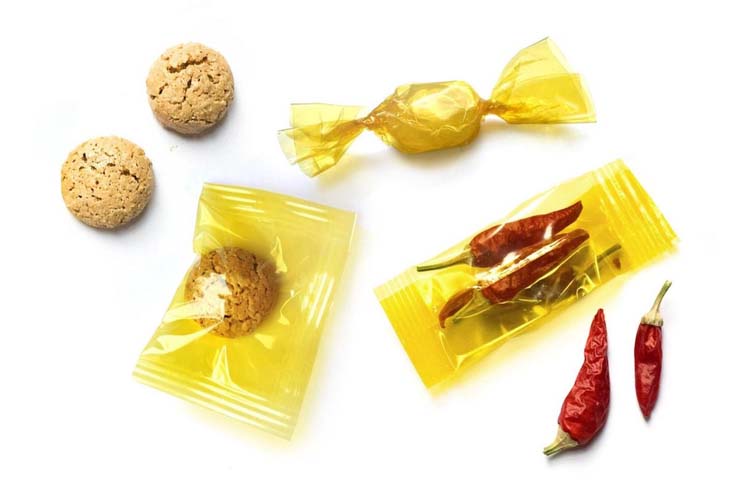Source: positive.news
An edible alternative to plastic has won the Green Alley Award for innovation in the circular economy. It is one of a number of viable alternatives to single-use packaging
Turning base metal into gold was the holy grail of medieval alchemists. Tantalising, but unachievable. So, what would be an equivalent quest in the 21st century? How about turning the scourge of plastic waste into something useful – like soil-nurturing compost? Or even an edible snack?
Sounds as likely as alchemy. But it’s here, and it’s happening, thanks to the German startup Traceless. This female-led firm has devised a technique to turn agricultural waste, such as starch or brewery residues, into a range of ‘plastic’ films, coatings and rigid materials. Since the resultant materials are made entirely from plant residue, they’re completely compostable, breaking down in two to nine weeks, depending on their thickness. That means they can go straight into the home compost bin, or added to anaerobic digesters to help generate biogas.
They are even safe to eat – although the taste might leave something to be desired. And as Traceless co-founder Dr Anne Lamp explains: “Should they end up in our environment or oceans, they break down completely into CO2 and H2O, leaving no residues, or they get eaten by animals [with no ill-effects]”.

Traceless co-founders Johanna Baare, left, and Dr Anne Lamp. Image: Traceless The innovation won Traceless this year’s Green Alley Award. Initiated in 2014 by Landbell Group, a leading supplier of environmental and chemical compliance solutions, the award recognises and celebrates startups that are pushing the envelope within the burgeoning circular economy.
Since Traceless uses farming waste, it’s not competing for land with food crops – unlike, for example, some biofuels. It doesn’t rely on any harmful additives, solvents or chemicals. And compared to conventional oil-based plastics, the production methods save up to 87 per cent when it comes to carbon emissions.
The aim of the Green Alley Award is to encourage startups like Traceless to solve pressing problems with circular thinking. As founder Jan Patrick Schulz, CEO of the Landbell Group, which hosts the prize, puts it: “We want to foster business models that combine resource conservation with economic success in a holistic, bio-circular approach”. Traceless, he says, epitomised that aim.
The company is still at the pilot stage, building a plant that can produce enough material to test the market. The award’s €25,000 (£21,530) prize, says Dr Lamp, will help it to scale up.
Traceless is among a number of innovators capitalising on growing public concern about plastic waste, which in turn has triggered a growing appetite for sustainable alternatives within the industry.
Politicians are starting to respond, too. The EU has announced a ban on some single-use plastics, which comes into force in July. This combination of regulatory pressure and market demand is laying some fertile ground for innovation, with munchable packaging fast becoming flavour of the month.
Other edible alternatives to plastic
Seaweed water pods

Instead of plastic water bottles, runners at the 2019 London Marathon were handed edible, H2O-filled pouches to slay their thirst. Dreamed up by Notpla, the drinks pods are made from seaweed and plant materials, which can be swallowed whole, or left to degrade as harmlessly as, well, seaweed on the shore.
A shore thing

Evoware has also looked to the ocean for answers. It works with seaweed farmers in Indonesia to harvest the raw material for its compostable cups and packaging which, like Notpla, is safe to eat, too. Seaweed is increasingly feted as a source of healthy nutrients.
Smoke without fire

Researchers in the US are
exploring a novel combination of cows’ milk and clay, which, blended
together, can produce a strong, ultra-thin compostable material – so
light and airy that it’s been nicknamed ‘solid smoke’. Its potential uses range from packaging to insulation, without leaving behind any harmful residues.
The last straw

Main image: Traceless
Anyone justly horrified by photographs of turtles struggling with plastic straws will be cheered by Loliware’s ‘hypercompostable’ seaweed-based alternatives – safe for humans and sea creatures alike.


